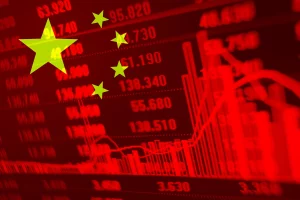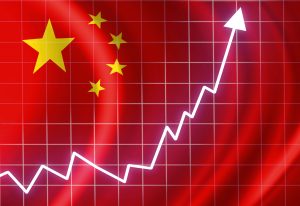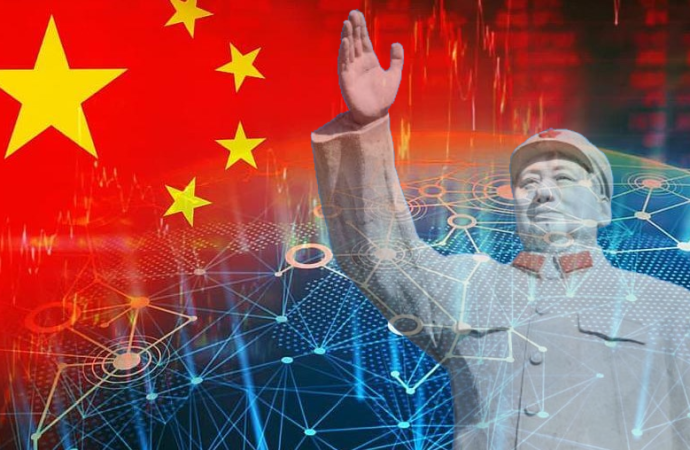China’s economic growth since the late 20th century has been nothing short of extraordinary. Starting in the late 1970s, under the leadership of Deng Xiaoping, China embarked on a series of economic reforms that shifted the country from a closed, centrally-planned system to a more market-oriented economy. These reforms included the de-collectivization of agriculture, the
China’s economic growth since the late 20th century has been nothing short of extraordinary. Starting in the late 1970s, under the leadership of Deng Xiaoping, China embarked on a series of economic reforms that shifted the country from a closed, centrally-planned system to a more market-oriented economy. These reforms included the de-collectivization of agriculture, the opening up to foreign investment, and the gradual liberalization of prices. As a result, China’s GDP grew at an average annual rate of nearly 10% over the next three decades, lifting hundreds of millions of people out of poverty and transforming the nation into the world’s second-largest economy.
Rapid urbanization has been a significant contributor to China’s economic growth. The government’s policies encouraged rural-to-urban migration, which led to the expansion of cities and the creation of new urban centers. This urbanization process has not only provided labor for the burgeoning industrial sector but also driven the demand for housing, infrastructure, and services, thereby stimulating economic activity across various sectors. The migration of millions of people to urban areas has created a consumer base that fuels domestic consumption, further propelling economic growth.
Key Drivers of Economic Expansion

Image by : Yandex
Rapid urbanization continues to fuel China’s economic growth. As more people move to cities, the demand for goods, services, and housing increases, which in turn stimulates economic activity. Urban areas become hubs of economic dynamism, attracting investments in infrastructure, manufacturing, and services. This urban expansion creates a virtuous cycle, where increased economic activity leads to job creation, higher incomes, and further urbanization. The scale of urbanization in China is unprecedented, with cities like Shanghai and Beijing becoming global metropolises that drive regional and national economic growth.
Technological innovation is another key driver of China’s economic growth. The country has made significant investments in research and development, leading to advancements in various fields such as telecommunications, artificial intelligence, and renewable energy. Chinese companies like Huawei, Alibaba, and Tencent have become global leaders in technology, contributing to the country’s economic expansion. The government’s focus on innovation has also fostered a vibrant startup ecosystem, with cities like Shenzhen becoming hotspots for tech entrepreneurship. This emphasis on technology and innovation has enabled China to move up the value chain, transitioning from a manufacturing-based economy to one that is increasingly driven by knowledge and innovation.
Impact of Global Trade on China’s Economy
Global trade has significantly boosted China’s economic growth. As the world’s largest exporter, China has benefited immensely from its integration into the global economy. The country’s export-oriented growth model has allowed it to leverage its comparative advantages in manufacturing and production to supply goods to markets around the world. This has not only generated substantial foreign exchange earnings but also created millions of jobs and spurred industrialization. The trade surplus has provided the government with the financial resources to invest in infrastructure and social programs, further supporting economic growth.
China’s economic growth trends have been shaped by international trade dynamics. The country’s accession to the World Trade Organization (WTO) in 2001 marked a turning point, opening up new markets and attracting foreign investment. However, China’s reliance on global trade also makes it vulnerable to external shocks, such as trade disputes and economic downturns in key markets. The recent trade tensions with the United States have highlighted the need for China to diversify its trading partners and reduce its dependence on exports. Nonetheless, global trade remains a crucial component of China’s economic strategy, and the country continues to seek new opportunities through initiatives like the Belt and Road Initiative.
Technological Advancements and Innovation
Technological advancements have been a major driver of China’s economic growth trends. The country has prioritized the development of high-tech industries, investing heavily in sectors such as telecommunications, biotechnology, and renewable energy. This focus on technology has enabled China to achieve significant productivity gains, enhance its industrial capabilities, and create new economic opportunities. Innovations in areas like 5G, artificial intelligence, and electric vehicles have positioned China as a global leader in technology, contributing to sustained economic growth.
Innovation fuels sustained China economic growth trends. The government has implemented policies to encourage innovation, including funding for research and development, support for startups, and the protection of intellectual property rights. These measures have fostered a culture of innovation, with Chinese companies increasingly filing patents and developing cutting-edge technologies. The rise of tech giants like Alibaba, Tencent, and Huawei is a testament to the success of these policies. By continually pushing the boundaries of technological innovation, China is able to maintain its competitive edge and drive long-term economic growth.
Urbanization and Infrastructure Development
Urbanization boosts China’s economic growth through increased consumer demand. As people move to urban areas, they tend to have higher incomes and greater purchasing power, which drives demand for a wide range of goods and services. This urban consumer base is a key driver of domestic consumption, which has become an increasingly important component of China’s economic growth. The expansion of urban areas also creates opportunities for businesses, leading to job creation and further economic development.
Infrastructure development accelerates China’s economic growth by enhancing connectivity. The government has invested heavily in building roads, railways, airports, and ports, creating a modern and efficient transportation network. This infrastructure development has facilitated the movement of goods and people, reducing costs and improving efficiency. It has also opened up new regions for economic development, promoting regional integration and balanced growth. The construction of high-speed rail networks, in particular, has transformed the way people travel and do business in China, contributing to economic dynamism and growth.
Challenges and Risks to Sustained Growth

Image by : Yandex
China’s economic growth faces demographic challenges and an aging population. The country’s one-child policy, which was in place for several decades, has led to a declining birth rate and an aging population. This demographic shift poses significant challenges for the economy, including a shrinking labor force, increased demand for healthcare and social services, and pressure on pension systems. To address these challenges, the government has implemented policies to encourage higher birth rates and is exploring ways to increase labor force participation, including raising the retirement age.
Environmental concerns pose risks to China’s economic growth sustainability. Rapid industrialization and urbanization have come at a significant environmental cost, including air and water pollution, deforestation, and soil degradation. These environmental issues not only affect the health and well-being of the population but also have economic implications, such as reduced agricultural productivity and increased healthcare costs. The government has recognized the importance of addressing these environmental challenges and has implemented measures to promote sustainable development, including investing in renewable energy, enforcing stricter environmental regulations, and promoting green technologies.
Future Projections and Policy Directions
Future projections indicate that China’s economic growth is likely to moderate in the coming years. As the economy matures, the rapid growth rates of the past are expected to slow down. This moderation is partly due to structural factors, such as the transition from an investment-driven growth model to one that is more consumption-oriented. Additionally, external factors, such as trade tensions and global economic uncertainties, may also impact growth. Nonetheless, China is expected to remain one of the world’s largest and most dynamic economies, with growth rates that, while slower than in the past, are still robust by global standards.
Policy directions indicate that the government will focus on sustainable economic growth. Recognizing the need to balance economic development with environmental sustainability, the government is likely to prioritize green growth and innovation. Policies aimed at reducing carbon emissions, promoting renewable energy, and enhancing energy efficiency will be central to this strategy. Additionally, the government is expected to continue its efforts to address demographic challenges, including policies to support higher birth rates and improve social services for the aging population. By focusing on sustainable development and innovation, China aims to achieve long-term economic stability and prosperity.
















